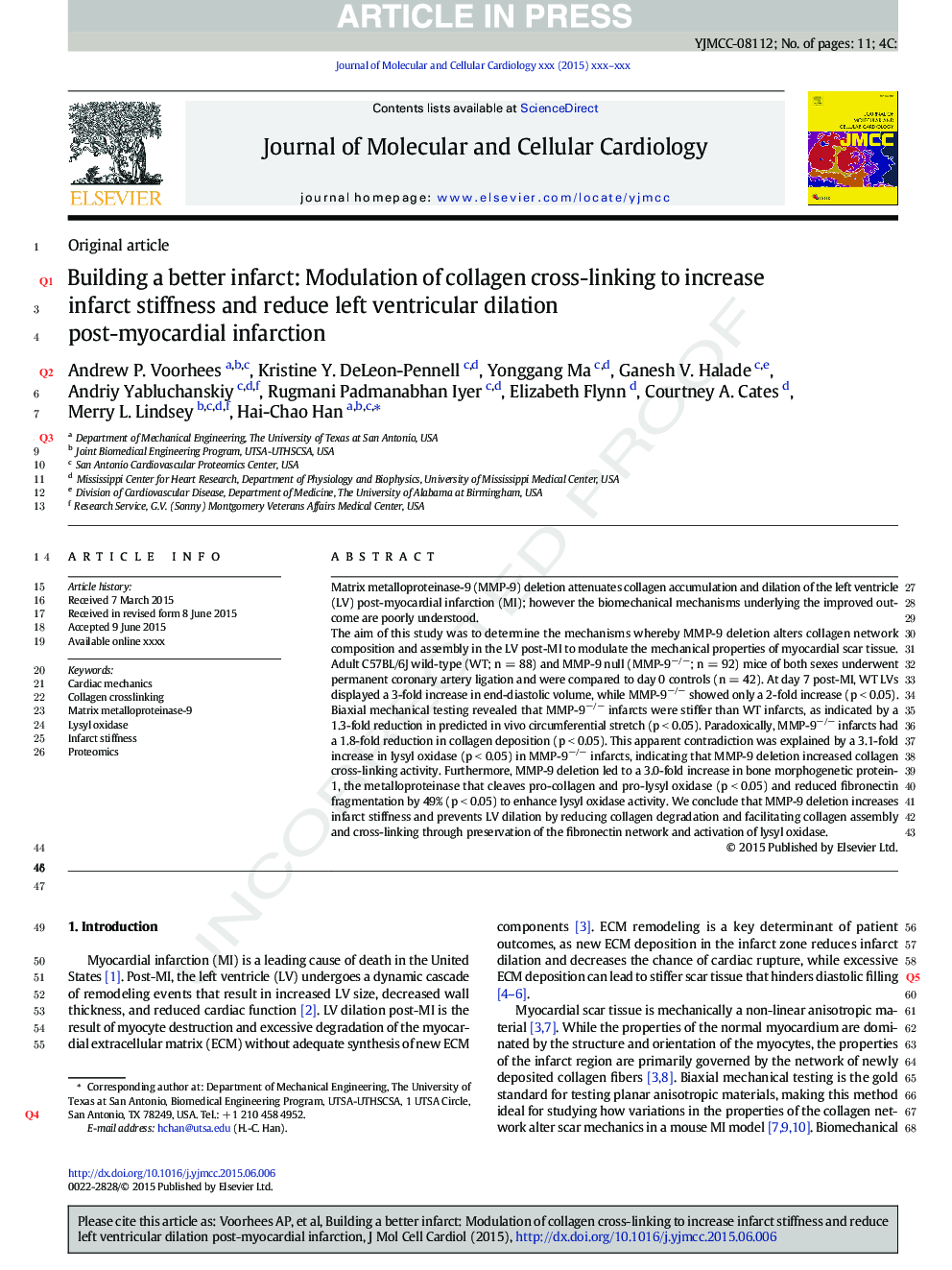| Article ID | Journal | Published Year | Pages | File Type |
|---|---|---|---|---|
| 8474210 | Journal of Molecular and Cellular Cardiology | 2015 | 11 Pages |
Abstract
The aim of this study was to determine the mechanisms whereby MMP-9 deletion alters collagen network composition and assembly in the LV post-MI to modulate the mechanical properties of myocardial scar tissue. Adult C57BL/6J wild-type (WT; n = 88) and MMP-9 null (MMP-9â/â; n = 92) mice of both sexes underwent permanent coronary artery ligation and were compared to day 0 controls (n = 42). At day 7 post-MI, WT LVs displayed a 3-fold increase in end-diastolic volume, while MMP-9â/â showed only a 2-fold increase (p < 0.05). Biaxial mechanical testing revealed that MMP-9â/â infarcts were stiffer than WT infarcts, as indicated by a 1.3-fold reduction in predicted in vivo circumferential stretch (p < 0.05). Paradoxically, MMP-9â/â infarcts had a 1.8-fold reduction in collagen deposition (p < 0.05). This apparent contradiction was explained by a 3.1-fold increase in lysyl oxidase (p < 0.05) in MMP-9â/â infarcts, indicating that MMP-9 deletion increased collagen cross-linking activity. Furthermore, MMP-9 deletion led to a 3.0-fold increase in bone morphogenetic protein-1, the metalloproteinase that cleaves pro-collagen and pro-lysyl oxidase (p < 0.05) and reduced fibronectin fragmentation by 49% (p < 0.05) to enhance lysyl oxidase activity. We conclude that MMP-9 deletion increases infarct stiffness and prevents LV dilation by reducing collagen degradation and facilitating collagen assembly and cross-linking through preservation of the fibronectin network and activation of lysyl oxidase.
Related Topics
Life Sciences
Biochemistry, Genetics and Molecular Biology
Cell Biology
Authors
Andrew P. Voorhees, Kristine Y. DeLeon-Pennell, Yonggang Ma, Ganesh V. Halade, Andriy Yabluchanskiy, Rugmani Padmanabhan Iyer, Elizabeth Flynn, Courtney A. Cates, Merry L. Lindsey, Hai-Chao Han,
